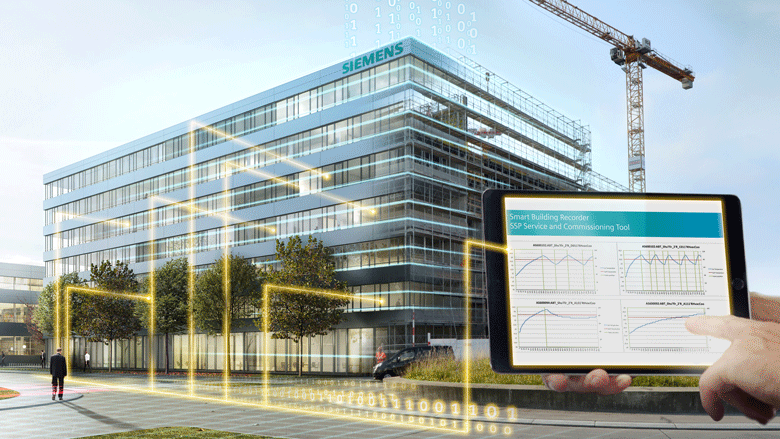

Using Building Information Modelling (BIM) to its fullest extent means extending its reach from design development into site activities and long-term asset management. In Switzerland, Siemens Real Estate has taken a huge leap forward in digital construction by working with Austria’s Strabag to digitise construction of its new $124m facility. The new headquarters consolidates group operations, bringing together a production facility previously located 40 kilometres away in Volketswil, and providing modern office and laboratory space.
The result will be two new buildings co-located, each with 18,400 square metres of floor space and 250 underground-parking spaces. Together with the core refurbishment of an existing office building of 13,700 sq m for R&D functions in 2021, Siemens will take up 30 per cent less space than before and overall rental costs to the company will fall by more than 20 per cent.
 Construction began in April 2016 and Siemens specified the use of BIM throughout the project. Christoph Leitgeb, project manager from Siemens Real Estate, explains that a range of responses came back, providing a reflection of the maturity of the local market in terms of BIM preparedness. Some contractors told Siemens that incorporating BIM would add more than $1m to the price; for others it was already part of their business model. This included Strabag, which had not only been using BIM for a decade, but was able to use it to manage site processes including time and cost – so called 4D (time) and 5D (cost) BIM.
Construction began in April 2016 and Siemens specified the use of BIM throughout the project. Christoph Leitgeb, project manager from Siemens Real Estate, explains that a range of responses came back, providing a reflection of the maturity of the local market in terms of BIM preparedness. Some contractors told Siemens that incorporating BIM would add more than $1m to the price; for others it was already part of their business model. This included Strabag, which had not only been using BIM for a decade, but was able to use it to manage site processes including time and cost – so called 4D (time) and 5D (cost) BIM.
Using the model to prepare work packages and compare progress onsite to the model improved transparency on the project compared to traditional approaches, and reduced management time. Monthly progress meetings were informed with site pictures recorded by contractor personnel using hand-held devices to provide daily updates of activity. Such measures also reduced unnecessary paperwork.
Digital transformation
During construction, the site team also built an object database, which is to become the digital as-built model used to operate and maintain the buildings. Extension of BIM into these six dimensions makes this a pilot project for both Siemens and the industry, as it seeks to harness true digital transformation.
The scheme is scheduled for completion this summer and many lessons have been learnt. One of which was the use of a closed BIM model. Utilising Strabag’s existing expertise and systems meant using the Autodesk suite of software was specified throughout the project.
[caption id="attachment_326958" align="aligncenter" width="780"] Construction of the office and production buildings began in May 2016 and was completed in July 2018.[/caption]
Construction of the office and production buildings began in May 2016 and was completed in July 2018.[/caption]
This use of a single data format meant that the team was dependent on the capabilities of one software vendor. This is in contrast to an open BIM model, where project teams can use non-proprietary Industry Foundation Class (IFC) files to update the consolidated model.
Cost savings
Siemens Building Technologies’ BIM expert Wolfgang Hass explains that this is an important lesson for future projects, along with the need to create standards around the format of the as-built data repository, better known as the digital twin.
Financial benefits from the project are yet to be measured, but the team is expecting these to exceed industry statistics as outlined by the US’ Stanford University of 10 per cent savings due to prevention of clashes on site, 40 per cent lower costs due to the prevention of change orders, and a 9 per cent saving in the lifetime operational costs.
This article was originally published in MEED Mashreq Construction Report Vol 3: Delivering Innovation in Construction, in April 2018.

This article is extracted from a report produced by MEED and Mashreq titled Delivering Innovation in Construction. Click here to download the report
You might also like...

Rainmaking in the world economy
19 April 2024

Oman receives Madha industrial city tender prices
19 April 2024

Neom seeks to raise funds in $1.3bn sukuk sale
19 April 2024

Saudi firm advances Neutral Zone real estate plans
19 April 2024
A MEED Subscription...
Subscribe or upgrade your current MEED.com package to support your strategic planning with the MENA region’s best source of business information. Proceed to our online shop below to find out more about the features in each package.





